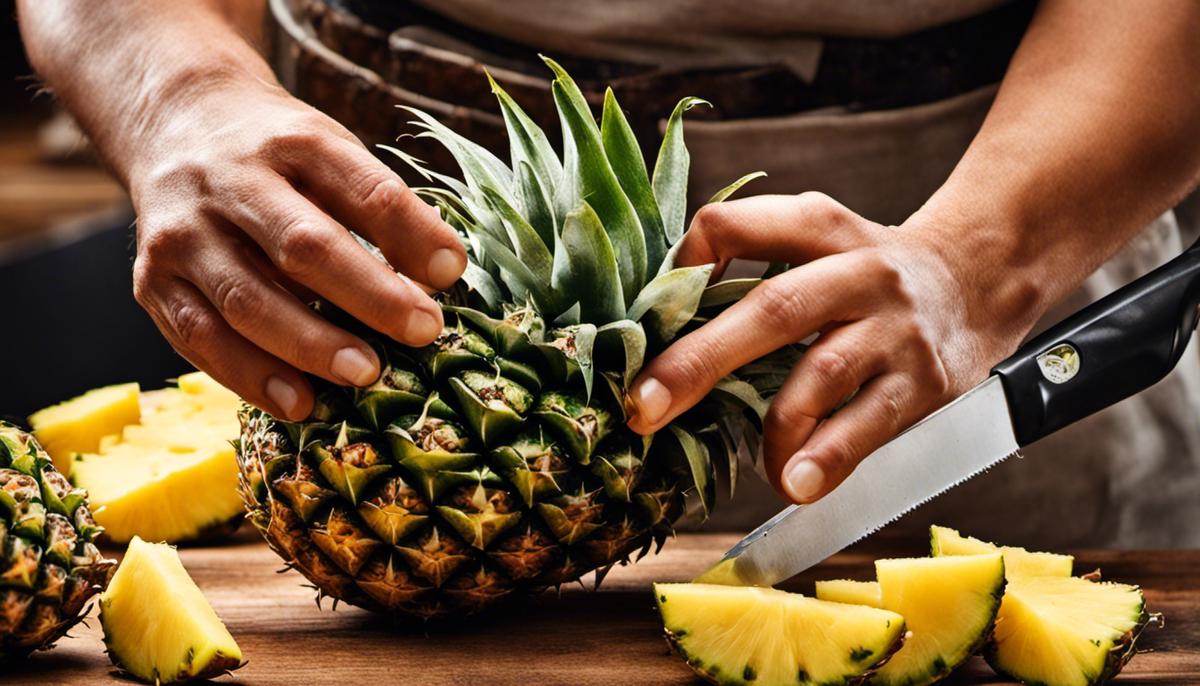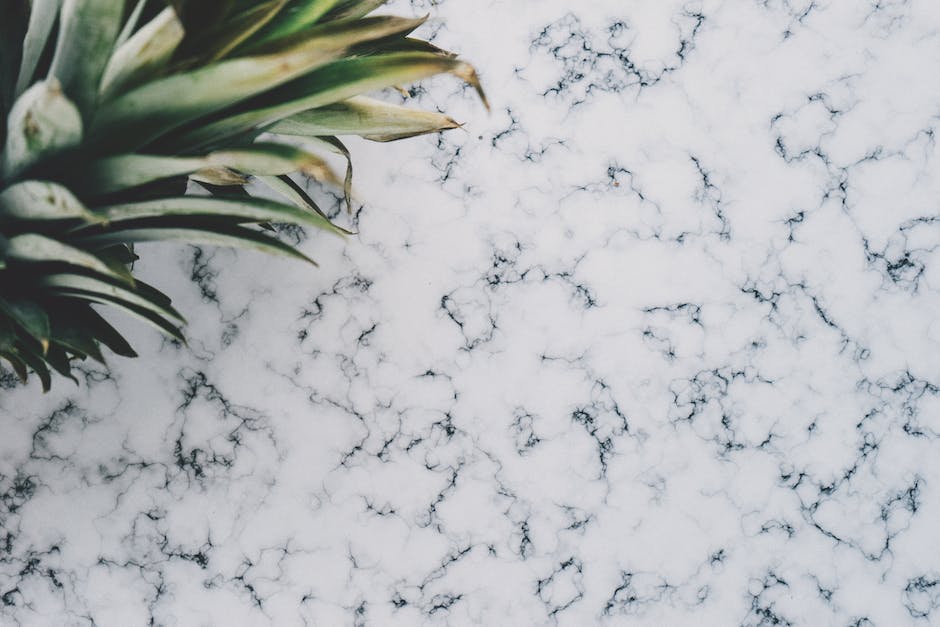Grow Your Own Pineapple Plant at Home

As fascinating as it is fruitful, growing a pineapple plant from a simple pineapple top is a rewarding venture that brings the tropics right to your home. There’s something intrinsically satisfying about nurturing a tiny top into a full plant, bearing its delightful fruit. Our journey starts with selecting a healthy pineapple and preparing its top for planting. We shall then traverse through the intriguing process of root induction and eventually, delve deep into the art of planting. Along the way, we’ll explore the pineapple plant’s optimal environment – from light and temperature regulations to watering requirements, and tackle the many common issues that might come along. For anyone looking to take on the wonderful challenge of growing a pineapple plant, this well-rounded guide is all you need to embark on your tropical adventure.
Selecting and Preparing a Pineapple Top
The Ultimate Guide to Choosing and Preparing a Pineapple Top for Planting
There’s something uniquely satisfying about watching your very own pineapple plant grow from a simple fruit top! But before the magic can begin, there are important steps to follow in selecting and preparing a pineapple top. Here’s an in-depth guide to kickstart the fruitful gardening journey.
#1 Choose the Perfect Pineapple
Choosing the right pineapple is the cardinal step in the process. Seek out a fresh and healthy looking pineapple with lush green leaves at the supermarket or farmer’s market. The body of the fruit should be firm and golden-brown with no signs of mold, bruises or soft spots. Fresh and ripe pineapples usually have a sweet aroma at their base, which indicates that they’re perfect for planting.
#2 Twist Off the Crown
Once you’ve picked up the perfect pineapple, it’s time to remove the top. Firmly grasp the body of the pineapple in one hand and the crown of leaves in the other. Twist the crown off in one swift clockwise motion. Yes, twist, don’t cut. Cutting might damage the delicate nascent roots hidden in the crown.
#3 Remove Excess Fruit
Now that you have the pineapple crown, trim off any fruit flesh from the base. Any residual fruit can rot and thereby endanger the whole sprouting process. After you remove the flesh, you’ll notice some small brown stubs at the bottom of the crown. That’s the beginning of an exciting future pineapple plant!
#4 Get Rid of Lower Leaves
The next step is to gently pluck the lower leaves to expose about an inch of the base. Within these stripped layers lie the potential roots of your pineapple plant. Also, removing leaves reduces the chance of water uptake; too much water can lead to root rot.
#5 Dry Out the Crown
Once done with all the trimming, let the crown dry out for a few days before planting it. The aim is to let the cut end and the peeled layers air dry to reduce the risk of infection and rot when planted.
#6 Planting Time!
Preparing a quality potting mix that’s light, well-drained and rich in organic matter will set your pineapple top up for success. Plant your pineapple crown in the center of the pot, pushing it down until only the leafy part is showing. Soak the soil with water after planting and make sure it’s not waterlogged, as pineapples prefer not to have “wet feet.”
So there you go! With the right pineapple, proper preparation, and a bit of TLC, you are well on your way to growing your own tropical paradise. Remember, once the pineapple crown is planted, patience becomes the name of the game. Pineapple plants may take around 2 years to bear fruit, but the wait will certainly be well worth it. Happy planting!

Root Induction and Planting
Unleashing the Potential of Pineapple Crowns: The Art of Root Propagation and Planting
Once you’ve taken the time to select and slice your pineapple, and you’ve pruned and prepared your crown, it’s time to shift your focus to the next big step – promoting root growth. This is an essential part of propagation and introduction of the pineapple crown to a new life as a self-sustaining plant. Let’s break down the process of inducing roots from your pineapple crown.
Root induction is a profound wonder of nature. This process after successfully removing, prepping, and drying your pineapple crown, is kick-started by submerging the crown in water. Choose a jar or a glass, large enough for the crown to sit on top while the stem dips into the water. Place your crown on top of the jar, ensuring only the bare section of the stem touches the water, and keep it in a warm spot with good light but no direct sunlight. Too much heat can scorch the pineapple and prevent roots from forming. Change the water every few days to prevent rot and promote root formation.
Within weeks, the pineapple crown will produce roots and it’s quite the exciting spectacle! You’re looking for a sizable mass of roots, dense enough to support your plant in a larger environment, ideally between 2-3 inches long.
Now comes the planting phase, equally crucial for your pineapple top.
Make sure to pick a large pot, preferably 10-12 inches, with good drainage. Despite being a tropical plant, pineapples don’t like water-logged conditions. Drainage is critical to its success. Pour your pre-mixed potting soil into your pot, but don’t fill it to the top – leave a space.
Next step is transferring your rooted crown. Gently remove the crown from the water, and marvel at that lovely growth of the roots. It’s okay to pat yourself on the back for a job well done! Heft the potting mix in the center to create a small mound. Place the crown on top of this mound, spreading the roots around it. Then cover the roots with soil, firming it gently around the base while ensuring not to bury the base of the crown itself. The leaves should be completely free, and the stem should be nestled snugly in your pot.
Post-planting care decides the journey of your pineapple plant from here. Initially, it’s best to place the pineapple pot in bright indirect sunlight and water it modestly every week. Overwatering at this stage could drown the pineapple – remember, these are desert-loving bromeliads!
The pineapple plant should start showing signs of new growth in around two months. This is the indication that your plant has taken to its roots and is ready to grow and thrive.
Patience is a virtue, especially when it comes to growing pineapples. Nurturing a pineapple plant from its crown to a ripe, juicy fruit might take up to 2-3 years. But rest assured, the delight of home-grown pineapples is well worth the wait!
So roll up those sleeves, revel in each step, appreciate the beauty of growing, and brace for the journey of turning a humble pineapple crown into a thriving plant. Nothing quite compares to the joy of growing your own tropical paradise in a pot!

Taking Care of the Pineapple Plant
Now, let’s delve deeper into the ideal conditions and care techniques suitable for a thriving pineapple plant. After initial planting, the location of your pineapple plant is crucial. Pineapples are tropical plants that flourish in warm climates, so finding a sunny spot indoors is vital. This spot should ideally provide your pineapple plant with a good balance of light, such as bright indirect sunlight, for at least six hours a day.
On to the ever-important topic of watering. Pineapples, similar to succulents, are quite drought-tolerant and do not respond well to overwatering. You can ensure optimal watering by keeping the soil slightly moist rather than completely drenched. Watering should be performed approximately once a week or when the top inch of the soil appears to be parched.
Temperature is also a vital factor to consider. The ideal room temperature for a pineapple plant is between 65-85 degrees Fahrenheit. These plants can cope with short periods of cold weather; however, they are susceptible to frost damage. Keeping them indoors during the chillier months is advisable.
On to the nutrient aspect – pineapples benefit greatly from a good dose of compost or well-rotted manure every couple of months. This form of feeding can result in a healthier and more productive plant. An organic compound such as potassium and nitrogen, which are higher than phosphorous, is often preferred.
The growth of a pineapple plant can be slow, but it is important to remember that these are essentially low-care, low-fuss plants. Recurring concerns would be monitoring the plant for signs of disease or pests, such as mealybugs or scale. Keeping the plant clean from dead leaves and other debris will lower the risk of pest damage.
Lastly, the aesthetic appearance shouldn’t be ignored! Pineapple plants enjoy a gentle dusting with a clean cloth or a shower under warm mist. This not only keeps your plant looking shiny and attractive but also removes dust that can hamper sunlight absorption.
Growing pineapples at home can be a fulfilling hobby. It combines the thrill of nurturing a living thing with the anticipation of reaping a sweet, delicious fruit. And beyond that, having a thriving, verdant pineapple plant is a unique, bright addition to any indoor space!
Growing your own pineapple is not just about the end result, it’s an entire journey. And remember, patience is key. The reward is worth it: a fresh, home-grown pineapple that you’ve laboriously grown from crown to fruit.

Guiding your pineapple plant to its full potential is more than just a hobby; it is a journey of growth and discovery. As you care for your plant from its genesis as a mere top into a full-grown fruit-bearing wonder, you will come to understand its needs and requirements more intimately. Whether it’s maintaining the perfect light conditions, preserving the correct temperature or ensuring it’s adequately hydrated, every step is rich with insight and reward. Remember, the journey might be rife with common issues, but equipped with wisdom and resourcefulness, each challenge only serves to strengthen your bond with your tropical companion. So, plunge into this venture with an open mind, and soon enough, you might just be slicing into a homegrown, sweet and juicy pineapple, the fruit of your hard work and dedication.



